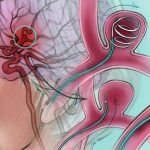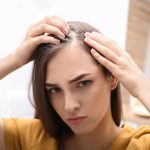
What is adenomyosis?
Adenomyosis is a condition that affects your uterus (womb). It can cause painful and heavy periods.
This condition affects 20% to 35% of females.
If you have adenomyosis, you might also have a similar condition called endometriosis. The features of these 2 conditions overlap.
What are the symptoms of adenomyosis?
Symptoms of adenomyosis can include:
- heavy periods
- painful periods
- pain during sex
- chronic (ongoing) pain in the pelvis
- bleeding between periods
- infertility
The symptoms may be mild for some people. But they can also be severe enough to interfere with your work, study and enjoyment of life. Sometimes there are no symptoms.
What causes adenomyosis?
Adenomyosis occurs when the cells that normally line the inside of your uterus also grow in the layer of muscle in the wall of the uterus.
It is not certain how or why the uterus-lining cells enter the muscle wall.
Adenomyosis is only seen in women in their reproductive years. It happens in response to the hormone oestrogen. It usually goes away after menopause when your oestrogen levels drop.

Illustration showing adenomyosis growing in the layer of muscle in the wall of the uterus.
When should I see my doctor?
See your doctor if you have painful or heavy periods.
Also see your doctor if you have:
- any unusual bleeding from your vagina
- pain when having sex
How is adenomyosis diagnosed?
Adenomyosis often takes time to diagnose.
Your doctor will talk to you about your symptoms and examine you. During the examination, they may notice your uterus is tender and enlarged.
Your doctor might recommend you have an ultrasound scan. In some cases, they may recommend magnetic resonance imaging (MRI scan).
Your doctor may also refer you to a specialist for further tests and treatment.
How is adenomyosis treated?
Your doctor will talk with you about the different treatments available. The choice of treatment will depend on your symptoms and stage of life. This includes thinking about whether you are planning a pregnancy or want to have a baby in your future.
Self-care measures
Warm baths and heat packs may help relieve the pain associated with adenomyosis.
Exercise, meditation or acupuncture may also be tried. But there is little to no research evidence showing that they improve the symptoms of adenomyosis.
Pain-relief medicines
If you have pain associated with adenomyosis, your doctor may recommend a trial of anti-inflammatory medicines. They may suggest that you take these medicines with paracetamol.
Hormonal treatments
Hormonal treatments can help relieve your pain and reduce heavy bleeding. They do this by regulating the oestrogen levels in your body.
Your doctor may recommend:
- the pill (combined oral contraceptive pill)
- a progestogen-only pill
- an intrauterine device (IUD) that releases progestogen
- a hormone-releasing implant
These hormonal treatments are forms of contraception, so you will not be able to get pregnant while using them properly.
It can take several months for your fertility to return after stopping some of these treatments. So, talk to your doctor about the most suitable treatments for your stage of life.
Surgery
There are some surgical procedures that can be considered for the treatment of adenomyosis. These may involve removing:
- abnormal areas of the muscle layer of your uterus
- the lining of the uterus
Hysterectomy is an option for women with severe adenomyosis who have not responded to other treatments.
Talk to your doctor about what would be a suitable option for you, especially as these procedures can affect your fertility.
Can adenomyosis be prevented?
As the cause of adenomyosis is not fully understood, there is nothing you can do to prevent this condition.
Complications of adenomyosis
Adenomyosis can cause complications such as:
- fertility problems
- a higher risk of pregnancy complications
- anaemia from heavy bleeding



